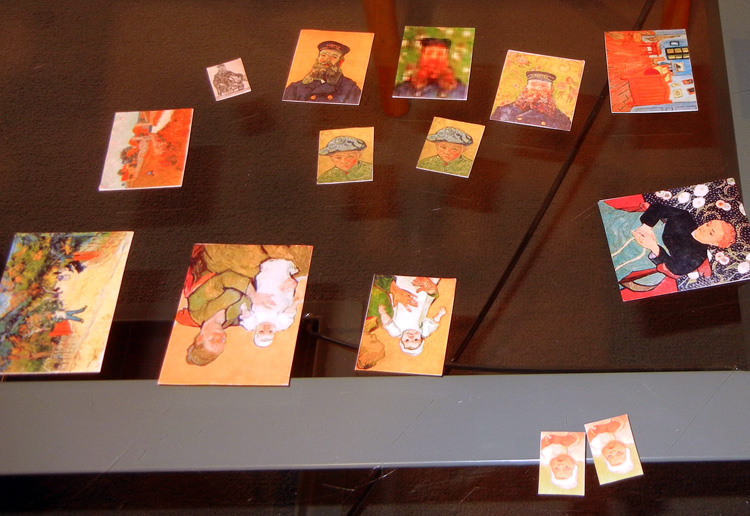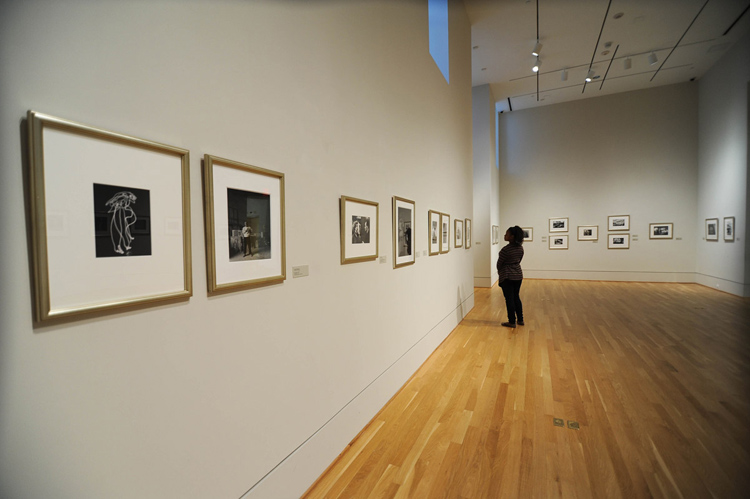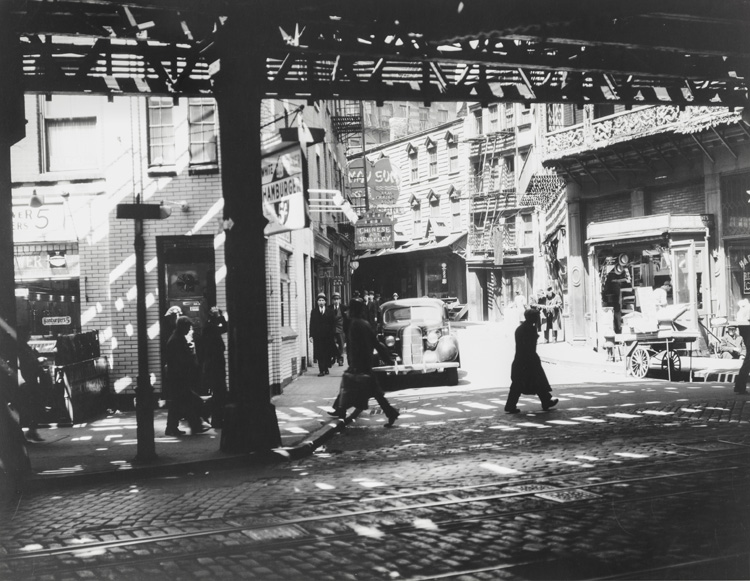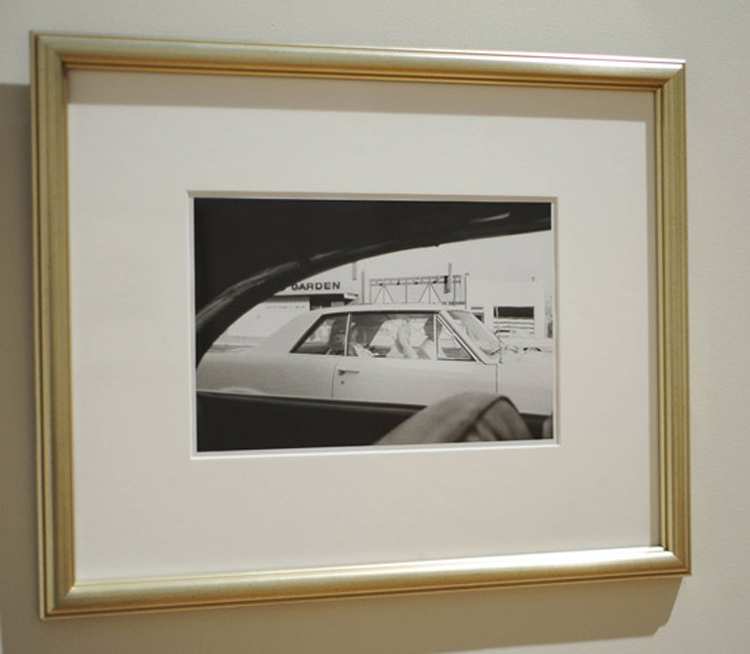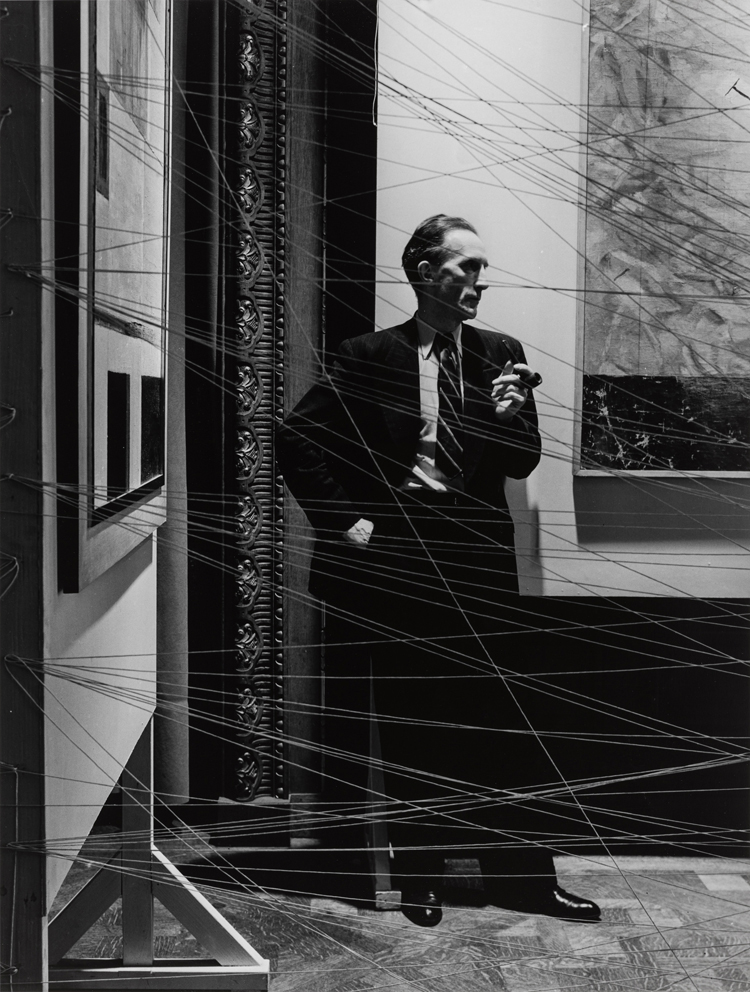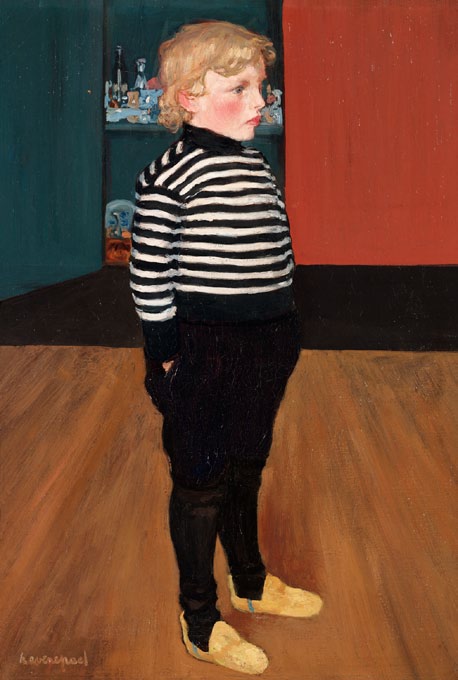
View of Chief Curator Eliza Rathbone’s office wall, with images from this fall’s Van Gogh Repetitions exhibition and catalogue. Photo: Liza Key Strelka
Exhibitions at the Phillips are years in the making. Our curators often spend at least 2-3 years researching, compiling checklists, locating artwork, collaborating with other museums and venues, visiting and writing to potential lenders, and writing catalogue text. During that time, they immerse themselves in the exhibition’s subject matter. Oftentimes, their offices become transformed by their work: stacks of reference catalogues piled high, drafts of loan letters and checklists abound, and the images of artworks seem to magically appear on their walls. For this fall’s Van Gogh Repetitions exhibition and its accompanying catalogue, Chief Curator Eliza Rathbone printed images of all the “repetitions” we will be featuring in the show and grouped them on one of her office walls, as seen in the image at left. She was able to visualize the similarities and differences between paintings of the same subject matter as she worked on her catalogue entries and began thinking about the exhibition’s layout.
Once the preliminary work is complete, the artworks are secured, and the catalogue text is off to the publisher, the real fun begins. And by “fun”, I mean playing with miniature-sized “maquettes” of the paintings in the show to determine exhibition design and layout. These small, to-scale images combined with a scaled model of our exhibition spaces allow the curator to visualize gallery layouts and groupings before the works arrive in-house, making for a smoother and more efficient installation process. Not surprisingly, it’s also much safer moving around small cardboard rectangles than priceless paintings.
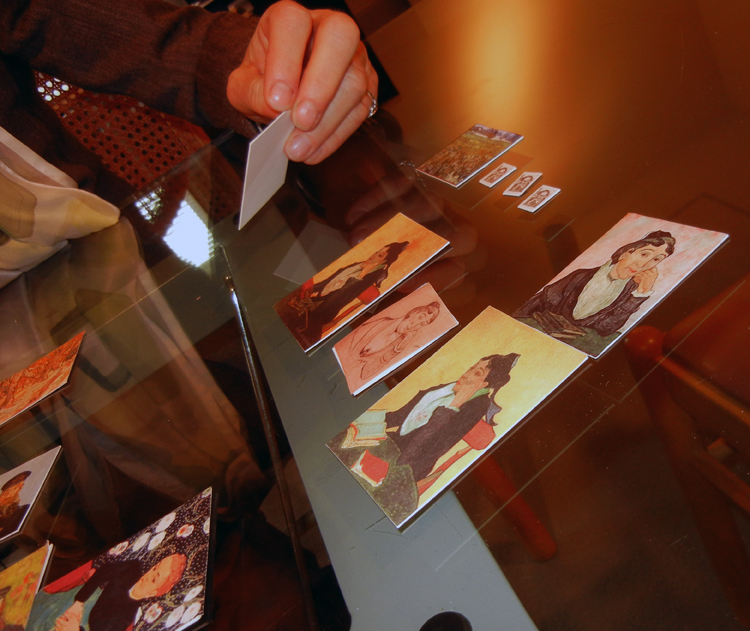
Eliza Rathbone laying out maquettes of works that will be featured in Van Gogh Repetitions. Photo: Liza Key Strelka
Recently Eliza, Head of Conservation Elizabeth Steele, and I sat down to begin shaping the design and visitor flow of the van Gogh exhibition in preparation for a meeting with our exhibition designer. Here’s a sneak peek of some of the works that will grace our walls beginning October 12. Stay tuned for more “sneak peeks” as our design progresses, and we get closer to opening day. We’re looking forward to sharing the real paintings and works on paper with you this fall!

